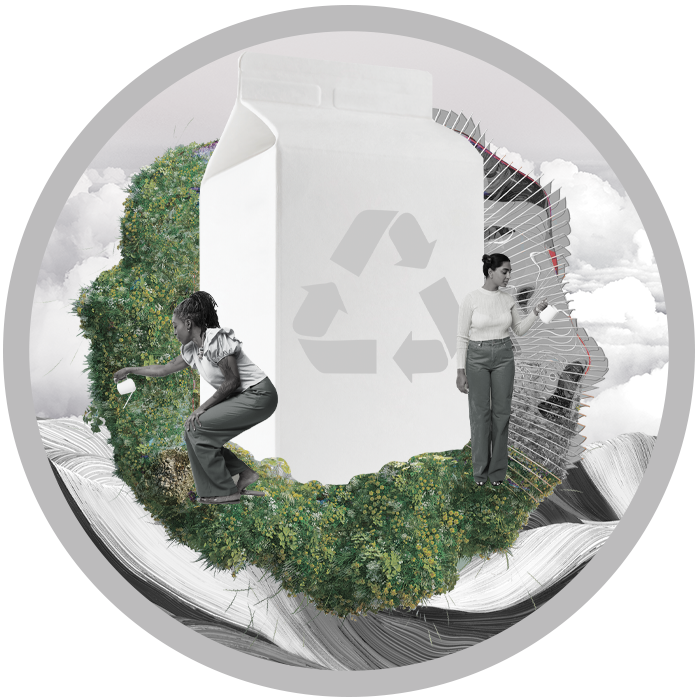Incentivizing consumers to practice sustainability
But this is just the first step—actually getting consumers to follow through on recycling or other disposal instructions is another process. One way to incentivize sustainable actions is through consumer rewards. The rewards can come in many different forms, from meaningful experiences, to QR codes, to apps.
For example, Volkswagen turned a staircase that was next to an escalator into a piano in order to incentivize people to be more active and use less energy. This prompted more and more people (a 66% increase) to take the stairs instead of the escalator because it would play a song and offer a fun experience.
In Canada, a CP company introduced a smart sensor on the back of recycling bins that would allow consumers to swipe the QR code on the back of products to see whether or not they’re recyclable.
Companies have also used accompanying apps to empower consumers to make the right choice. In the U.K. and France, a CP company created a mobile app that would inform people of the most sustainable choice in a particular category, like skincare, for example. The app would also reward the consumer with loyalty points for purchasing the most sustainable product.
However, it’s important to understand that consumers have reasonable limits. “In an urban area, you can encourage consumers to walk versus drive to the store. But you can’t expect the same from someone living in most rural locations, where the closest store may be 25 miles away,” said Clarke.
Using specific language to describe sustainability efforts
Another aspect of sustainability is the actual choice of the products themselves. CP companies have started introducing carbon-neutral food and beverage products to the market, with corresponding product labels to attract climate-conscious consumers. However, nearly 6 in 10 consumers don’t actually know what that term means or define it incorrectly.
The same issue presents itself with other terms, like GMO-free, because only 52% of consumers know what GMOs are. If CP companies want consumers to choose and, in many cases, pay more for sustainable products, they need to better educate them on what sustainability entails.
CP companies can go beyond a small logo or label to be more specific in how certain products are helping the environment—through more detailed, engaging messaging on different channels. This can also help to combat “greenwashing.” Research shows that among European fashion brands, 59% of green claims are misleading. Part of this issue is the use of vague terminology in product marketing that many consumers gloss over or even misinterpret.
You only need to look toward rising grassroots influencers such as TikTok star Andrea Cheong to see the power of customers in calling out brands for greenwashing. She represents the growing wave of consumers using their purchasing power to identify exaggerated sustainability claims and shift their purchases toward cleaner, “slower" brands that put intense focus on measurable and focused impacts.
“Be very clear about how your product, or your company, is giving back,” said Clarke. “What specifically are you doing? Companies can’t hide behind broad concepts of environmentalism and net-zero targets because no one understands what they actually mean.”
This also means that companies should be transparent about failures and missteps at the same time. CP firms can more effectively incentivize and educate consumers on sustainability if they, too, are open and humble about their decisions and mistakes.
Overall, democratizing sustainability is a combination of three efforts: educating consumers about the ramifications their choices have on the environment, nudging them to make a smarter decision and then empowering or rewarding them for making that decision.
“Companies should be applauded for what they’re doing when it comes to sustainability across the entire supply chain,” said Clarke. “But they have a bigger opportunity and responsibility to help consumers make more sustainable choices, too.”
However, democratizing sustainability is not limited to the actions of consumers. The idea extends to other stakeholders in the business ecosystem, like competitors and government entities.



 Close
Close